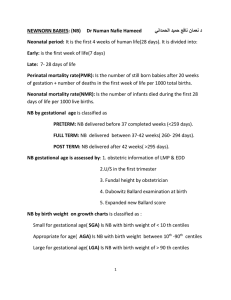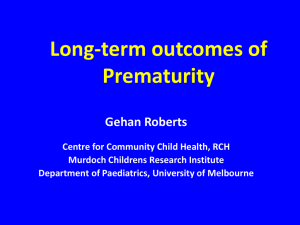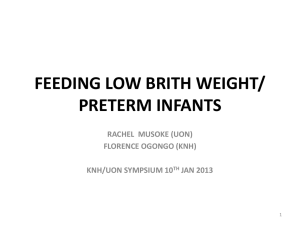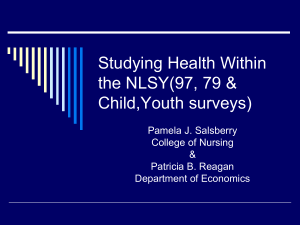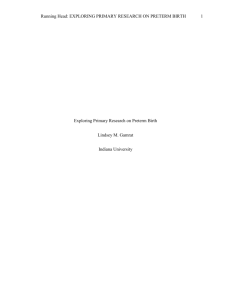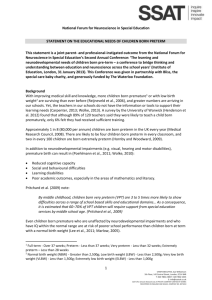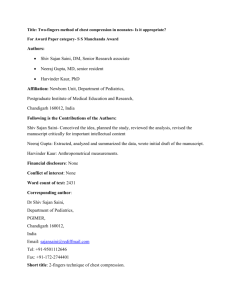International J. of Healthcare and Biomedical Research, Volume: 03
advertisement
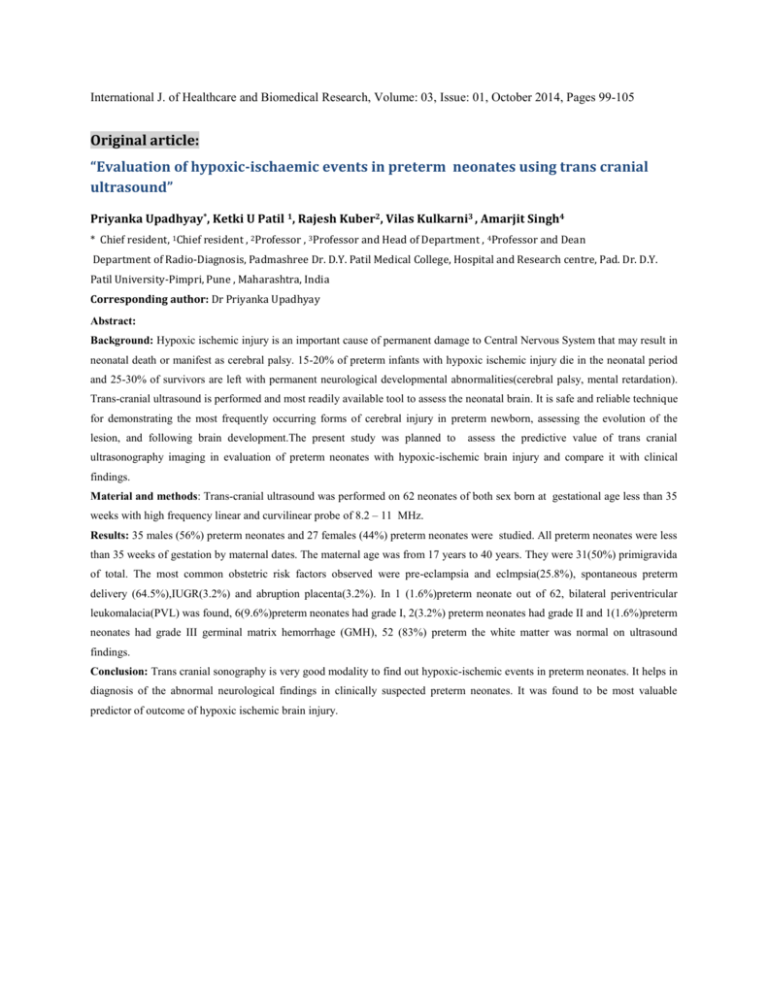
International J. of Healthcare and Biomedical Research, Volume: 03, Issue: 01, October 2014, Pages 99-105 Original article: “Evaluation of hypoxic-ischaemic events in preterm neonates using trans cranial ultrasound” Priyanka Upadhyay*, Ketki U Patil 1, Rajesh Kuber2, Vilas Kulkarni3 , Amarjit Singh4 * Chief resident, 1Chief resident , 2Professor , 3Professor and Head of Department , 4Professor and Dean Department of Radio-Diagnosis, Padmashree Dr. D.Y. Patil Medical College, Hospital and Research centre, Pad. Dr. D.Y. Patil University-Pimpri, Pune , Maharashtra, India Corresponding author: Dr Priyanka Upadhyay Abstract: Background: Hypoxic ischemic injury is an important cause of permanent damage to Central Nervous System that may result in neonatal death or manifest as cerebral palsy. 15-20% of preterm infants with hypoxic ischemic injury die in the neonatal period and 25-30% of survivors are left with permanent neurological developmental abnormalities(cerebral palsy, mental retardation). Trans-cranial ultrasound is performed and most readily available tool to assess the neonatal brain. It is safe and reliable technique for demonstrating the most frequently occurring forms of cerebral injury in preterm newborn, assessing the evolution of the lesion, and following brain development.The present study was planned to assess the predictive value of trans cranial ultrasonography imaging in evaluation of preterm neonates with hypoxic-ischemic brain injury and compare it with clinical findings. Material and methods: Trans-cranial ultrasound was performed on 62 neonates of both sex born at gestational age less than 35 weeks with high frequency linear and curvilinear probe of 8.2 – 11 MHz. Results: 35 males (56%) preterm neonates and 27 females (44%) preterm neonates were studied. All preterm neonates were less than 35 weeks of gestation by maternal dates. The maternal age was from 17 years to 40 years. They were 31(50%) primigravida of total. The most common obstetric risk factors observed were pre-eclampsia and eclmpsia(25.8%), spontaneous preterm delivery (64.5%),IUGR(3.2%) and abruption placenta(3.2%). In 1 (1.6%)preterm neonate out of 62, bilateral periventricular leukomalacia(PVL) was found, 6(9.6%)preterm neonates had grade I, 2(3.2%) preterm neonates had grade II and 1(1.6%)preterm neonates had grade III germinal matrix hemorrhage (GMH), 52 (83%) preterm the white matter was normal on ultrasound findings. Conclusion: Trans cranial sonography is very good modality to find out hypoxic-ischemic events in preterm neonates. It helps in diagnosis of the abnormal neurological findings in clinically suspected preterm neonates. It was found to be most valuable predictor of outcome of hypoxic ischemic brain injury.
